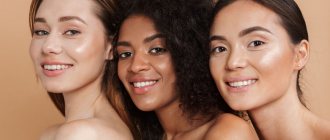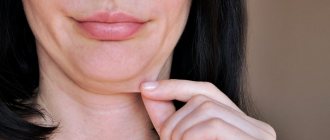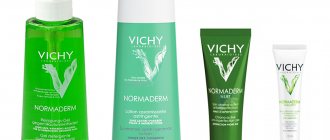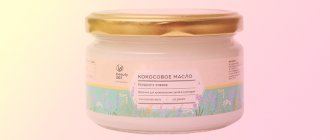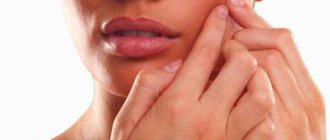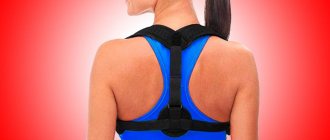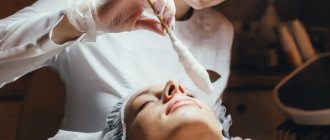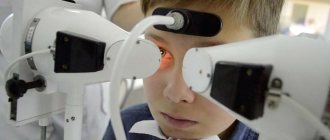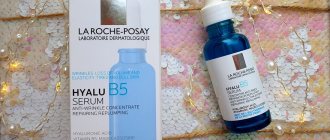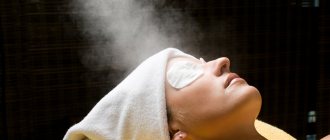Anyone who has ever purchased cosmetics knows how much the cost of products from different brands varies. In addition to price, products from different manufacturers differ in the level of effectiveness and safety.
The most authoritative organization classifying cosmetic products is CIDESCO - the International Committee on Cosmetology and Aesthetics.
It is this classification that is considered generally accepted and implies the division of cosmetics into products of the Mass Market, Middle Market, Luxury, Pro and Cosmeceutical segments.
Mass market class cosmetics (Mass market, mass segment)
This is the most affordable cosmetics. Hundreds of different brands offer their products in this segment. Mass market products contain many synthetic components, artificial flavors, and sometimes downright toxic ingredients. Such products do not solve serious problems, and sometimes even provoke them, clogging pores, causing irritation, and making the skin dull.
However, even among these inexpensive cosmetics you can find safe products, although their use will not have a serious effect. In addition, before purchasing, you should carefully study the composition, rejecting products containing, for example, petroleum products, designated by the prefix Ceteareth- .
Marketers believe that more than half the cost of a Mass Market cosmetic product is advertising costs, and only 10% are the ingredients that fill a particular tube or jar.
Cosmetic brands in the Mass Market category include:
- Eveline
- Lumene
- Ruby Rose
- Clean line
- Black Pearl
- Avon
- Nivea
- Faberlic
- Oriflame
Types of decorative cosmetics for the face
Decorative cosmetics are products that are designed to improve appearance, make the face harmonious, pleasant for the perception of others, emphasize its advantages and hide/disguise flaws. The entire range of such products can be divided into several types.
For the skin
In principle, any skin needs correction, and even more so if it has pimples, blackheads, areas of inflammation or redness, peeling, scars. To disguise such flaws, the following decorative cosmetics can be used:
- concealer and foundation;
- corrector and dry, loose powder;
- base for day or evening makeup;
- glitter and corrector pencil.
Blush can also be classified as a corrective product, because it emphasizes the shape of the face, making it more elongated or, conversely, slightly rounded.
The listed remedies are not able to completely get rid of problems, but they can disguise them and even out the relief of the skin. Cosmetologists make the only clarification - if pimples/blackheads/scars are too pronounced, then they will not be able to be hidden, although they will become less noticeable.
We recommend reading about how facial correction is performed using cosmetics. From the article you will learn about what is needed for facial correction with cosmetics, examples of facial correction depending on its shape. And here is more information about how facial strobing is performed.
For eyebrows
The entire arsenal of decorative cosmetics that is used for eyebrows can adjust their shape, change color and make the look more expressive. From the range of similar ones we can highlight:
- mascara (it can also be used for eyelashes);
- pencils of different colors;
- lipstick (special);
- shadows.
The last remedy is a familiar one for the eyes, which can also be used slightly for other purposes. Before eyebrow correction, they are shaped by plucking out excess hairs with tweezers or turning to specialists for help.
Pencils are the most convenient way to draw the “tails” of the eyebrows and their line; lipstick is matte and allows you to make the hair color suitable for your general skin type.
Watch this video about eyebrow cosmetics:
For eyelids
These are the most popular decorative cosmetics because they allow you to make your eyes more expressive, visually change the shape of your eyes and even the shade of their cornea. This type included:
- shadows are dry, liquid, creamy;
- pencils for drawing “arrows”;
- liquid eyeliners;
- markers.
This also includes glitter and cosmetic sequins. Mascara is often included in this group of decorative cosmetics - it allows you to visually lengthen hairs, make them thicker, “thicker”. And together with shadows and eyeliners the whole image is created.
For lips
Lipsticks, lip gloss, corrective pencil - these three products can radically change your appearance, giving it some looseness or, conversely, providing the impression of innocence and modesty.
Most often, women use only 3 types of decorative cosmetics - mascara, eye shadow/liner and lipstick.
Middle market class cosmetics (Middle market, middle segment)
Products of a higher level than Mass Market contain at least 30% natural biologically active ingredients in their composition. These products contain more natural preservatives obtained by chemical processing of plant materials.
However, during the production process, even the most useful and natural ingredients are subjected to the cheapest technological procedures, which entails a large loss of beneficial properties.
For example, plant extracts are obtained by hot pressing, exposing the raw materials to high temperatures.
When purchasing Middle Market cosmetics, you should be aware that products from different manufacturers may enter into a chemical reaction. Therefore, it is advisable to choose a cleanser, toner and cream from the same line.
In addition, many artificial ingredients in such cosmetics cause a kind of addiction to the skin. Therefore, inexpensive cosmetics must be changed at least once every 6 months.
Middle Market brands include:
- L'oreal
- Mary Kay
- Revlon
- Yves Rocher
- Mirra Lux
- Bourjois
Luxury cosmetics (Lux, selective cosmetics)
These cosmetics are not cheap, but in their production they use up to 70-80% natural ingredients. Manufacturers use so-called selective (selected) raw materials of the highest quality. For example, when growing plants whose extracts will be added to cosmetics, aggressive chemical fertilizers and pesticides are not used.
Raw materials are processed using advanced gentle technologies, for example, in cold pressing mode, which allows preserving the beneficial properties of the components. Naturally, the use of such extraction and distillation equipment is quite expensive, which affects the price of the product.
Luxury brands do not skimp on scientific research, introducing innovative technologies, new formulas and molecular structures into their products.
Naturally, some part of the cost of the treasured “luxury” cream is a payment for the name of a famous brand. But in terms of effectiveness, such cosmetics, as a rule, are many times better than Middle Market products.
Cosmetic brands in the Luxury segment include:
- Christian Dior
- Chanel
- Shiseido
- Nina Ricci
- Yves Saint Laurent
- Givenchy
- Chanel
- Clarins
- Elizabeth Arden
- Lancome
- Helena Rubinstein
- Guerlain
- Nina Ricci
- Versace
- Clinique
- Shiseido
What may be present in the composition
Decorative cosmetics for the face are multi-component products, which can contain beneficial substances, neutral ones, and downright harmful ones. Each product's packaging contains a list of ingredients, but often their names mean nothing to the consumer. To understand such subtleties, it is worth understanding what may even be included in the composition:
- cetearyl alcohol – greatly dries out the upper layer of the epidermis and can cause extensive peeling and patches of redness;
- triethanolamine - has a positive effect on the water-lipid balance of the skin, but at the same time is a fairly powerful toxin;
- hydroviton – has a mild anti-inflammatory effect;
- sodium erythorbate is a neutral component, but ensures long-term storage of the product;
- parsol - is able to reflect the harmful effects of ultraviolet (sun) rays on the skin;
- Cetrimonium chloride is necessary only to obtain a homogeneous structure, which makes it possible to distribute the product as evenly as possible over the skin.
The ingredients listed are chemical and include ethylene glycol (a humectant) and ceteareth (an emulsifier). But every decorative cosmetic product, even if it belongs to the lowest quality class, must contain natural ingredients:
- coconut and castor oils – retain moisture in the dermis and soften;
- camphor essence – relieves inflammation and irritation;
- sorbitol and urea - maintain the proper level of moisture for several hours;
- various vitamins (especially often tocopherol - vitamin E) - nourish the cells of the skin and hairs;
- wheat extract and primrose oil - tone the dermis, accelerate blood flow, which ensures a complete supply of oxygen to cells;
- sesame seed oil – prevents skin from drying out.
In addition, some products may contain lactic acid, sericite, silk proteins, magnesium stearate, talc and iron oxides. Each of the listed components is of organic origin and is designed to make the product crumbly, easy to apply, and give it a certain color. It may also contain esters with complex formulas, bee products (wax), fatty alcohols, lanolins, glycerin - they make facial skin soft and smooth.
Watch this video about what ingredients you should avoid in cosmetics:
Professional cosmetics (Saloon, salon cosmetics)
These products are intended for professional use in beauty salons. The effectiveness of such funds is really high. The rich formula of professional products allows you to achieve a visible effect after just one or two applications.
It is the manufacturers of professional cosmetics who have their own laboratories and research institutes, or cooperate with leading institutions in this field.
Among professional products, there are many that require complex application technology accessible to an experienced cosmetologist. When used independently, for example, chemical peeling compounds can cause irreparable harm to the skin.
At the same time, creams and masks from professional brands are very effective when used regularly at home. Therefore, you should know that a number of professional products should be used exclusively by a cosmetologist in a salon, while other products can be used at home. Due to the high efficiency and enriched composition, a cosmetologist should select professional cosmetics for home use.
Professional cosmetic brands include the following:
- Decleor
- Algologie
- Academy
- Guam
- Payot
- Lacrima
- Janssen
- Holy Land
- Biotherm
- Phytomer
- Darphin
Pharmacy cosmetics or cosmeceuticals (Cosmetics Pharmacy, cosmeceuticals)
Separately, it should be noted that pharmaceutical cosmetics or cosmeceuticals are popular today. The term was coined in 1980 by combining the words “cosmetics” and “pharmaceuticals.” You should know that in Russian legislation there is no concept of “cosmeceuticals”. Therefore, so-called cosmeceutical products are not subjected to such extensive clinical research and testing as pharmaceutical products.
Consequently, all testing is carried out at the initiative of the manufacturer. From a legal point of view, cosmeceuticals or pharmaceutical cosmetics on the Russian market are no different from cosmetics sold in stores.
However, many experts note the fairly high effectiveness of cosmeceutical products. These products often contain ingredients developed by the pharmaceutical industry.
Among the positive aspects of pharmaceutical cosmetics, it should be noted that they are highly hypoallergenic. But pharmaceutical cosmetics should under no circumstances be confused with medications.
In addition, it should be understood that the effect declared by manufacturers of pharmaceutical cosmetics at the cellular level means only the effect in the upper layers of the skin. The molecular weight of the vast majority of components simply will not allow them to penetrate further.
Cosmeceutical brands include:
- PHYTO
- LIERAC
- Cellcosmet
- Avene
- URIAGE
- Roc
- VICHY
- La Roche-Posay
LiveInternetLiveInternet
This article presents facts from the book of dermatologist-cosmetologist S. Belovskaya, as well as studies of the composition of cosmetic products by V.I. and O. Perov. To prevent your skin from becoming a testing ground for the next experiments of cosmetic industry businessmen, you must know the following: what class (according to the international classification) the cosmetics you decide to purchase belong to.
1) Mass market Oriflame, Faberlic, Avon, Nivea, Eveline, Lumene, Ruby Rose, Herbina, Belinda, Black Pearl, Pure Line, One Hundred Beauty Recipes, etc. a) Main components. Contrary to advertising that cosmetics of this class contain exclusively natural substances, they are based on petrochemical products, which, to put it mildly, negatively affect our skin. b) Long shelf life . This period is due to the presence in its composition of heavy, toxic preservatives, formaldehyde derivatives (nipazole and paraform). c) Massive advertising. The beautiful Reese Witherspoon flashes on the screen in literally every advertising block. For a Hollywood star to agree to advertise something, how much money should she be offered as a fee? By the way, about 70% of the finances invested in the “creation” of these cosmetics are spent on advertising (therefore, as a result, there is nothing to introduce modern technologies and nothing to buy natural raw materials with). d) Beautiful and catchy packaging . 20% of the funds are spent on it. The main thing is that it is beautiful, right? d) A frequent provocateur of various skin defects and diseases , such as dermatitis, swelling, ulcers, hypo- and hyperpigmentation, seborrhea and many others, since it is very toxic. This was especially true for those with sensitive and not entirely healthy skin. f) Due to its toxicity, it is dangerous for damage to the liver, kidneys, mucous membranes, osteoarticular system, cardiovascular system, and central nervous system. Not immediately, of course, over time. g) Moderate price. A big plus for our market. However, are our health and beauty worth such savings? "Gag". For a long time I couldn’t wrap my head around the following: how can a cream for 35 rubles consist of only natural substances, when the use of natural extracts and preservatives in production is oh so expensive? Are companies involved in charity? How can you recognize cosmetics that can cause damage to beauty and health due to the harmful components they contain? There is NO COMPLETE LIST OF COMPONENTS in cosmetic products in the advertising brochures and on the websites of these companies. THE PRESERVATIVES included in this cosmetics are NOT INDICATED. Only ACTIVE INGREDIENTS are listed. VEILED FORMULATIONS are used, for example, “soft detergent components”, etc. You can find the full composition only on the packaging of the cosmetic product, since this is required by the laws of the Russian Federation. This is a reason to be wary! Companies that produce natural and truly harmless cosmetics are not afraid to indicate the full composition even in advertising brochures and on their websites.
2) Middle market Revlon, L'Oreal, Garnier, Mary Kay, Pupa, Borjois, Decleor, hormonal cosmetics, Yves Rocher Yves Rocher), Lancome (Lancome), etc. a) Main components. Such cosmetics contain from 30 to 60% herbal ingredients, which undoubtedly makes cosmetics of this class higher quality and less dangerous. However, its main components are still petrochemical products. The composition of such cosmetics includes: Deionized water, witch hazel, methylparaben, benzoic acid, carbomer, sodium hydroxide, medicinal plant extracts. b) Effect of application. Only “aesthetic” (with regular use). Those qualitative changes in the structure of the skin that are promised in advertising and colorful booklets are impossible: completely different formulas and other technologies are required. c) It is recommended to use only one line of cosmetics , otherwise a conflict of ingredients is possible, which can lead to allergic reactions and other skin defects. d) It is addictive if you use this cosmetics for more than 6 months . If canceled, unpleasant consequences are possible (sharp aging, skin defects). 3) Lux Elizabeth Arden, Yves Saint Laurent, Nina Ricci, Chanel, Estee Lauder, Clinique, Helena Rubination , Givenchy (Givenchy), Christian Dior (Christian Dior), Christian Lacrois (Christian Lacroix) and other high fashion houses. a) Main components. 70-80% natural plant extracts, the natural composition of the plant’s biocomponents is completely preserved. b) Interactive enzyme technologies are used in production , whereby these cosmetics can significantly improve the appearance of the skin and solve a number of aesthetic problems. c) Has a high% hypoallergenicity , no addiction (dependence). d) High price. e) Originals are produced in small batches. Most of our stores sell cosmetics from these companies, manufactured under license (most often in Poland). Naturally, this option for producing cosmetics can no longer be classified as LUX.
4) Cosmetics for professionals Salon cosmetics: Academy, Gadeno, Lacrima, Jassen, GG, etc. Cosmetics used in salons by a cosmetologist, for which the main thing is that you remain her client for a long time, and preferably forever. a) Main components: heavy, fast-acting pharmaceutical components, which make it possible to get a quick but short-term effect (for example, in the evening in a restaurant or theater you need to look your best). b) Cosmetics in this category have an addictive effect, i.e. When discontinued, the skin ages quickly, and skin problems that did not exist before may appear. 5) Cosmeceuticals are conventionally divided into cosmeceuticals of levels I, II and III. Depending on the level, it works in different layers of the skin: epidermis (outer), dermis and hypodermis. Level I cosmeceuticals (arisen on the basis of cosmetology and pharmacology; always a product of the pharmaceutical industry). Cosmetics from the pharmacy: Vichy, Phyto, Lierac, Uriage, Phytopharm, Pharmcosmetic, Solar, Green line, as well as skin and hair care cosmetics from the Infinum holding, Mirra Lux, Fleur de Sante. a) Main components: pharmaceutical components obtained as a result of the application of the latest achievements of the pharmaceutical industry; Contains virtually no high quality natural ingredients. b) Works exclusively in the upper layers of the skin - the epidermis; Due to their high molecular weight (more than 5000 units), substances are not able to overcome the basement membrane and penetrate the dermis. c) Possible results: elimination of dry skin - no more than 9% (stable result); elimination of oily skin - 24%; elimination of small wrinkles and smoothing out deep wrinkles - no more than 35%. Cosmeceuticals of levels II and III have a therapeutic and healing effect on the skin. These areas of cosmeceuticals arose on the basis of cosmetology and nutrition, the science of nutrition of cells and tissues of the human body. Level II cosmeceuticals This type of cosmeceuticals works at the epidermis and dermis at the cellular level. Natria (Nature's Sunshine Products), Artistry* (Amway), Dermajetics (Herbalife/Shape Works), cosmetic lines from Neways, Vision. * - Amway cosmetics are able to work at the level of the dermis and have a slight healing effect on the skin, however, due to the content of substances such as propylene glycol, lauryl/laureth sulfates, they cannot be considered completely safe. We classify it as level II cosmeceuticals conditionally, since cosmetics of this class should not contain such harmful substances. A brief description of the features of II cosmeceuticals using the example of Natria cosmetics from Nature's Sunshine Products, Inc. Cosmeceuticals of this kind work at the cellular level and are able to have a restorative effect on biochemical processes in the skin, giving a long-lasting healing effect. Works in 5 layers of the epidermis and 2 layers of the dermis to the hypodermis. a) Recommended both for problem-free skin in order to preserve youth and beauty, and for unhealthy and problematic skin. Natria cosmetics are used by dermatologists in the complex treatment of dermatological diseases (acne (acne), neurodermatitis, psoriasis, dermatitis, rosacea, infectious skin lesions, etc.) They differ from traditional medicinal cosmetics in the absence of potent synthetic pharmaceutical components that are addictive. The healing and healing power is contained in specially developed compositions of medicinal plants. b) The highest hypoallergenic formula is 98%, so the cosmetics are recommended for allergy sufferers. Does not contain toxic or hazardous substances. c) Cosmetics do not produce the effect of rapid aging or deterioration of the skin condition upon abrupt withdrawal, i.e. there is no addictive effect. d) The achieved result after using and discontinuing Natria cosmetics is observed for quite a long time. e) Natria cosmetics are not tested on animals, but only on human volunteers. In addition to the ethical issue, this is another proof of the safety of the composition of this cosmetic line. Level III cosmeceuticals a) Works in the epidermis, dermis, hypodermis at the molecular level. b) It has all the qualities and advantages of level II cosmeceuticals, but is capable of a more effective and deeper effect on the layers of the skin. c) High cost. d) Ongoing clinical trials. For normal skin care, level II cosmeceuticals are sufficient, since most skin problems are rooted in the dermis.
Source: www.fz-info.com/index.php/-natures-sunshine
Nutricosmetics (dietary supplements)
The term "nutricosmetics" originated in France in the 1980s. This group of funds is not included in the CIDESCO classification. In fact, such products have nothing in common with conventional cosmetics, but are biologically active food additives. The composition of these products includes components aimed at improving the condition of the skin, hair, nails: vitamins, essential fatty acids, coenzyme, zinc, etc.
The use of “beauty pills” requires the approval of a doctor; they have a number of contraindications and side effects. In addition, the use of nutricosmetics does not replace the use of traditional cosmetics.
Popular nutricosmetic preparations:
- Inneov
- Daniel Jouvance
- Lady's formula
- Merz
- Phytophaner
What are the main differences between cosmeceuticals and cosmetics?
So, cosmeceutical brands and regular cosmetics have the following main differences
| Cosmeceuticals | Regular cosmetics |
|
|
|
|
|
|
|
|
|
|
|
|
And after analyzing the differences between ordinary cosmetics and cosmeceuticals, the conclusion follows that there is no need to buy very expensive cosmetic products, which in turn are useless, it is better to get really worthwhile drugs that work directly with the cause, and not with the consequence, of skin problems.
Cosmeceuticals reviews and results of use
And what else I would like to note is that all these cosmeceutical products are very economical, so it is better to spend money on a good cream, on a good series, because In addition to lasting longer, they are also very effective.
So the choice is yours, friends.
Sincerely yours, Alice...
Some nuances of choosing cosmetics
Naturally, effective and high-quality cosmetics cannot be cheap. Consequently, professional and luxury products are not available to everyone. However, when thinking about purchasing cosmetics from the lower and middle segments, it is worth considering the following:
- high-quality cosmetics, despite their high cost, are usually very economical. A jar of professional cream may well last for 4-6 months;
- cheap cream can be replaced with inexpensive but quite effective natural preparations. For example, almond oil purchased at a pharmacy for 80-100 rubles is preferable for caring for the skin around the eyes than a cream from the Mass Market segment for the same price.
The selection of a cosmetic product from any segment is very individual. Even the most expensive cream may simply not meet your skin's needs. Therefore, it is so important to navigate the huge variety of cosmetics, their composition, properties and rules of use.
What is the difficulty of choosing?
The difficulty in choosing cosmetics is explained by the fact that there is a wide variety of products on the cosmetics market that differ significantly in both quality and cost. Information about them is often so contradictory that without having certain knowledge, it can confuse rather than help in choosing cosmetics.
In drug annotations you can read the same characteristics about indications, rules of use and effects of use, and in popular Internet articles there are a lot of contradictory statements. For example, some articles do not recommend purchasing products from budget brands: they are toxic, ineffective, and after you stop using them, your skin only gets much worse.
In other articles you can find a completely opposite opinion, which claims that there is no point in using expensive cosmetics, since the price is “inflated” only for the well-known name of the company, an elite brand and expensive beautiful packaging, and not for the quality of the contents.
Another example of inconsistency, now concerning salon cosmetics. Some believe that it has a good effect and quick results due to the hormonal components it contains. Others are very beneficial for manufacturers and cosmetologists, but such products quickly become addictive and require constant use, and sometimes contribute to increased sweating, irritability and even menstrual irregularities.
In order not to get confused in all this, it is necessary to understand the classes of cosmetics and imagine what the fundamental difference is between products of the same purpose but of different classes.
